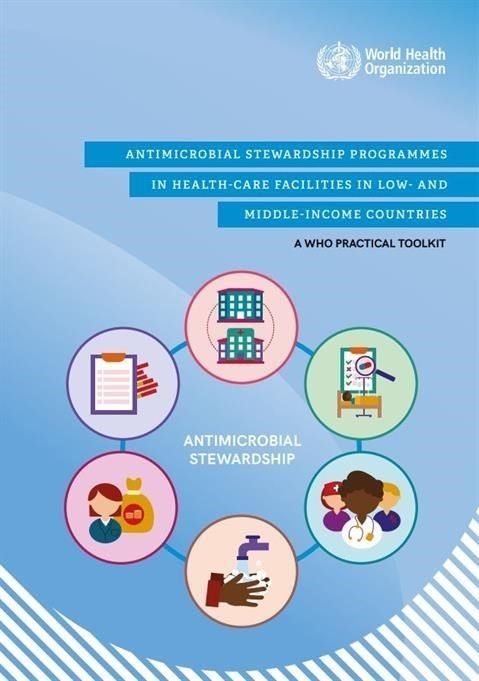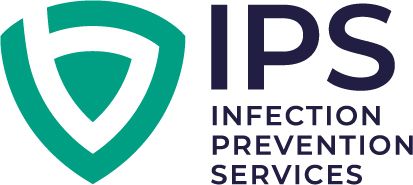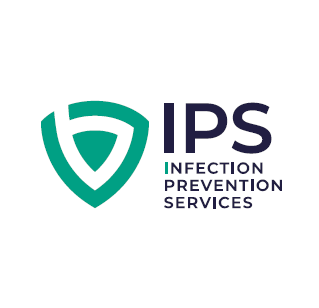The Silent Pandemic: AMR in Low and Middle-Income Countries

Introduction
For decades, the world has benefited hugely
from the power of antimicrobials- drugs that combat infections caused by
microorganisms. Among these, antibiotics specifically target bacteria and have
been transformative, turning once-deadly illnesses into treatable conditions.
However, this success story is increasingly threatened by the rise of
antimicrobial resistance (AMR), in which microbes adapt and become less
susceptible or entirely resistant to the drugs designed to destroy them. This
is not a localised issue but a global threat to public health, recognised by
leading international organisations, including the World Health Assembly and
the United Nations General Assembly.
The potential consequences of the increase
in AMR are dire. A sobering projection from a 2016 United Kingdom report
estimates that AMR could cause a staggering 10 million deaths per year by 2050,
exceeding the current mortality rate of cancer. Furthermore, the economic toll
is projected to be devastating, with a 100 trillion USD global economic impact
if effective measures are not implemented now. Even in a high income country,
with access to advanced healthcare, like the United States, the scale of the
problem is significant. Here, there are over 2.8 million AMR infections
annually, leading to approximately 35,900 deaths.
The Imperative of Antimicrobial Stewardship in LMICs
Given these alarmingly high rates of AMR and the potentially devastating consequences for already strained healthcare systems, antimicrobial stewardship (AMS) programs are essential for optimising antibiotic use, slowing the emergence of resistance, and ultimately improving patient outcomes in LMICs. These programs aim to instil a culture of responsible antibiotic use among healthcare professionals and the public, safeguarding the effectiveness of these life-saving medicines for future generations.
While the implementation of AMS programmes is crucial globally, LMICs face unique challenges that must be addressed to ensure their success. These can include:
- Limited financial and human resources:
Healthcare systems in LMICs generally operate with significantly fewer
resources in comparison to high-income countries. In 2016, LMICs spent an
average of 5.42% of their GDP on healthcare ($234 per person), in stark contrast
to the 12.59% ($5,179 per person) spent by high-income countries. This scarcity
of resources can directly impact the availability of trained staff, essential
diagnostic tools, and the necessary infrastructure to support comprehensive AMS
programs.
- Over-the-counter antimicrobial prescribing: In many
LMICs, antibiotics are readily available for purchase without an official
prescription, often over the counter. This easy access contributes
significantly to the inappropriate use of antibiotics, as individuals may
self-medicate for viral infections or use incorrect dosages and durations,
accelerating the development of resistance. Addressing this issue through
stricter regulations and public awareness campaigns is vital to limiting AMR in
LMICs.
- Inadequate water sanitation and hygiene: Poor
water sanitation and hygiene practices are prevalent in many LMICs,
contributing significantly to the high number of infectious diseases,
particularly diarrhoeal illnesses. This higher incidence of infections often leads
to increased antimicrobial use, further driving resistance. Studies suggest
that universal access to improved sanitation could potentially decrease
antimicrobial prescribing for diarrhoeal illnesses by a significant margin.

- Communication barriers: Countries with a high
degree of linguistic diversity may face additional hurdles in the communication
of AMS guidelines, educational materials, and public health messages.
Communication in different languages and cultural contexts is essential for
successful AMS implementation.
- Limited data on antimicrobial use and resistance: Comprehensive and reliable data on antibiotic consumption and resistance patterns may be scarce or incomplete in many LMICs. This lack of data makes it challenging to accurately assess the local AMR situation, identify specific targets for AMS interventions, and effectively monitor the impact of these programs. A 2019 study in central Thailand reported that only 49% of 45 surveyed hospitals had access to antimicrobial consumption data, highlighting this challenge.
Despite these considerable challenges, the
World Health Organisation (WHO) recognises the urgent need for the
implementation and strengthening of AMS programs in these resource-limited
settings. To address this need, the WHO has developed the comprehensive
“Antimicrobial Stewardship Programmes in Health-Care Facilities in Low- and
Middle-Income Countries: A WHO Practical Toolkit". This invaluable
resource offers valuable, stepwise guidance for establishing effective AMS
programs at both national and healthcare facility levels, specifically tailored
to the unique constraints and opportunities present in LMICs. The toolkit
emphasises an adaptable approach, encouraging countries and healthcare facilities
to start with achievable interventions and gradually increase their AMS
efforts.
The WHO toolkit outlines the importance of
establishing core elements as a foundation to support robust AMS programs at
both national (state/regional) and healthcare facility levels. These core
elements provide a framework for building comprehensive and sustainable AMS
initiatives.
1. National (State/Regional) Core Elements focus on
creating a supportive environment and infrastructure for AMS implementation
across the country:
- Establishment of a governance structure: This
includes forming a national AMS technical working group (TWG) linked to the
national AMR steering committee to provide strategic leadership and
coordination.
- Development and implementation of a national AMS
strategy and plan: This strategy should include national indicators to monitor
progress
- Regulation and guidelines: This involves
integrating the WHO's AWaRe (Access, Watch, Reserve)
classification of antibiotics into the national Essential Medicines List (EML)
and developing up-to-date clinical guidelines that incorporate AMS principles
and the AWaRe classification.
- Awareness, education, and training: Implementing
nationwide campaigns to improve public awareness of AMR and providing pre- and
in-service training for healthcare professionals on optimised antibiotic
prescribing.
- Supporting technologies and data: Facilitating
access to relevant diagnostic tests and building the capacity for data
collection and analysis related to antimicrobial consumption and resistance.
-
Monitoring and evaluation: Establishing systems to monitor the implementation of the national AMS strategy and evaluate its impact.
2. Healthcare Facility Core Elements focus on the
practical implementation of AMS within individual hospitals and clinics:
- Establishment of an AMS committee and/or team:
This multidisciplinary group should include physicians, pharmacists,
microbiologists (if available), and nurses to oversee and implement AMS
programs. In resource-limited settings, AMS champions can lead these efforts.
- Conducting a facility AMS situational analysis
(SWOT analysis): This helps to understand the local context, identify existing
strengths and weaknesses, and pinpoint opportunities and threats to successful
AMS outcomes.
- Prioritisation and implementation of healthcare
facility core elements: Based on the situational analysis, facilities should
prioritise and implement core elements such as developing local antibiotic
guidelines (including for surgical prophylaxis and common infections),
establishing surveillance of antibiotic use and resistance, and providing
regular feedback to prescribers.
- Implementation of AMS interventions: Starting
with the most obvious interventions and gradually introducing more advanced
strategies such as audit and feedback, pre-authorisation of specific
antibiotics, and prospective review of antibiotic prescriptions.
- Regular monitoring and evaluation of AMS interventions: Tracking the main indicators related to antibiotic use, resistance rates, and patient outcomes to assess the impact of AMS efforts and make the necessary adjustments.
- Offering basic and continued educational resources and training: Providing ongoing learning opportunities for healthcare professionals on optimised antibiotic prescribing and AMS principles.
- Clearly defined collaboration between AMS and Infection Prevention and Control (IPC) programs. Recognising the relationship between these two vital areas in combating AMR and healthcare-associated infections.
The success of AMS in general hinges on a collaborative approach, actively involving healthcare professionals at all levels, building on existing infrastructure, and fostering workable changes in antibiotic prescribing practices. The WHO toolkit strongly emphasises a stepwise implementation of AMS interventions, encouraging facilities to start small and keep it simple and doable. Undertaking a situational analysis or SWOT analysis is highlighted as an initial step to thoroughly understand the local context and identify existing strengths, weaknesses, opportunities, and potential threats to successful AMS implementation within a specific healthcare facility.
- Establish an ASP Committee: This multidisciplinary team is the cornerstone of an effective ASP, ideally including an infectious disease physician, clinical pharmacist, clinical microbiologist (if available), and nurses. Even in the absence of all these specialists, antimicrobial stewardship champions – passionate individuals from various healthcare professions – can drive the efforts, with access to expert advice when needed. The ASP committee can function as a standalone body or be integrated into an existing structure like the infection prevention committee, ensuring AMS is a regular agenda item.
- Conduct a Situational Analysis (SWOT): Before launching any interventions, a thorough understanding of the local situation is essential. Conducting a SWOT (Strengths, Weaknesses, Opportunities, Threats) analysis helps identify what is already in place regarding antibiotic use and resistance data, existing AMS activities, and available resources, as well as potential barriers to implementing the ASP. This analysis aids in the prioritisation of AMS interventions.
- Develop Local Antibiotic Guidelines: Guidelines tailored to the local situation, based on national or international recommendations and, vitally, local antibiotic susceptibility data. These are all essential for guiding appropriate antibiotic prescribing. These guidelines should cover the treatment of common infections and surgical prophylaxis. Using mobile phone-based applications can be a cost-effective and wide-reaching method to disseminate these guidelines among healthcare providers in LMICs, given the high mobile phone penetration in these regions.
- Implement Basic AMS Interventions: Start with the most obvious interventions that are relatively easy to implement and can yield noticeable results. These might include education for prescribers on optimal antibiotic use, reviewing indications for antibiotic prescriptions to ensure they are documented and justified, and auditing antibiotic use with feedback to prescribers. Feedback can be provided in real-time during ward rounds or retrospectively through reports. Even simple measures like ensuring clear documentation of the indication, drug, dose, route, and duration of antibiotic prescriptions in medical records can significantly improve antibiotic use.
- Focus on Education and Training: Continuous education and training for all healthcare professionals involved in antibiotic prescribing, dispensing, and administration are vital for long-term success. This can include interactive workshops, case-based discussions, and utilising readily accessible e-learning resources. Understanding key concepts such as the importance of using recommended first-line antibiotics whenever possible and the potential harm of broad
-spectrum therapy is crucial. Medical school education is also a key target for closing knowledge gaps. Active methods of education, such as audit and feedback and antimicrobial restriction, have proven to be particularly effective.
- Utilise Available Resources: Take full advantage of readily available resources such as the WHO's AWaRe (Access, Watch, Reserve) classification of antibiotics to prioritise the use of narrow-spectrum "Access" antibiotics whenever possible, reserving "Watch" and "Reserve" antibiotics for specific indications. The WHO toolkit itself provides detailed guidance on the structures, interventions, and assessment of AMS programs specifically for LMICs.
Monitoring and Evaluation of AMS Interventions: Regularly assessing the impact of AMS interventions is crucial for ensuring their effectiveness and making necessary adjustments. According to WHO there are measurements for
assessing the
effectiveness of AMS programs. These can be categorised as:
- Structure measures – presence of an AMS team
- Process measures – adherence to guidelines
- Outcome measures- antibiotic consumption, resistance rates, patient outcomes
Conclusion
Reference

Considering the substantial burden of AMR in LMICs and the critical role of well-implemented AMS programs, what innovative, context-specific strategies do you believe could further enhance the effectiveness and sustainability of these efforts in resource-limited settings?
If you found this overview insightful and are keen to delve deeper into the strategies and tools available for implementing AMS in LMICs, consider exploring the WHO toolkit (link) and other related resources to learn more and contribute to this vital area.
Here, at IPS we have up-to-date information on AMS, antimicrobials and their use and infection surveillance. Contact the HUB for further information or get an instant answer to a question from EVE. Also, check out our blogs on a wide variety of subjects available on our website.
💡 For more insights on IPC surveillance and best practices, explore our extensive IPS library of training courses and resources.
Visit the HUB for more IPC insights
Lyndon Forrest
I am a passionate and visionary leader who has been working in the field of infection prevention and control in aged care for almost 30 years. I am one of the co-founders and the current Managing Director and CEO of Bug Control New Zealand and Australia, the premium provider of infection prevention and control services in aged care. I lead a team that is driven by a common purpose: to help aged care leaders and staff protect their residents from infections and create a healthier future for them.
I am building a business that focuses on our clients and solving their problems. We are focused on building a world-class service in aged care. We focus on being better, not bigger, which means anything we do is for our clients.
Erica Callaghan
Erica Callaghan is a dedicated professional with a rich background in agriculture and nutrient management. Growing up on her family's farm in Mid Canterbury, she developed a deep passion for farming. She currently resides on her partner's arable property in South Canterbury.
In 2017, Erica joined the Farm Sustainability team, focusing on nutrient management and environmental stewardship. In February 2024, she became the Manager of Marketing and Sales at Bug Control New Zealand - Infection Prevention Services, where her passion now includes improving infection prevention outcomes.
Outside of work, Erica loves cooking and traveling, often combining her culinary interests with her explorations in Italy and Vietnam. She enjoys entertaining family and friends and remains actively involved in farm activities, especially during harvest season.
Toni Sherriff
Toni is a Registered Nurse with extensive experience in Infection Prevention and Control. Her career began as a kitchen hand and caregiver in Aged Care facilities, followed by earning a Bachelor of Nursing.
Toni has significant experience, having worked in Brisbane’s Infectious Diseases ward before returning home to New Zealand, where she continued her career as a Clinical Nurse Specialist in Infection Prevention and Control within Te Whatu Ora (Health NZ).
Toni brings her expertise and dedication to our team, which is instrumental in providing top-tier infection prevention solutions to our clients.
Julie Hadfield
Julie is experienced in Accounts & Payroll Administration & after a long career in both the Financial & Local Government Sectors, is now working with our team. Julie brings her strong time management & organisational skills to our team, which is important to keep the company running in the background to enable the rest of our team to provide top notch service to all of our clients.
Andrea Murray
I attended Otago University in NZ and graduated as a Dental Surgeon. After 40 years in the profession, I retired in 2022. Infection prevention knowledge was part of everyday practice, dealing with sterilisation, hand hygiene, and cleaning.
Before retiring, I began doing some editing and proofreading for Bug Control as I am interested in the subject and in the English language. During the COVID-19 lockdown, I attended the ACIPC course "Introduction to Infection Prevention and Control", which increased my interest in the subject. I now work part-time as the Content Editor for the company.
Princess
Princess began her career as a dedicated Customer Service Representative, honing her communication and problem-solving skills. She later transitioned into a Literary Specialist role, where she developed a keen eye for detail. Her journey then led her to a Sales Specialist position, where she excelled in client relations.
Now, as a Customer Support professional in Infection Prevention Services. Princess focuses on ensuring customer satisfaction, building loyalty, and enhancing the overall customer journey.
Dianne Newey
With over 35 years of experience as a Registered Nurse, I'm now applying all my experience and skills as a Senior Infection Prevention and Control Consultant with Bug Control Infection Prevention Advisory Services.
This is through IP&C education, IP&C environmental audits and reports, IP&C policy and procedure review and development and consultancy on infection prevention and control issues. When I’m not working, I spend time with my family and in my garden, where I grow all my own veggies.
Caoimhe (Keva) Stewart
Caoimhe is the Manager of Customer Service at Bug Control | Infection Prevention Services, where she ensures that learners have a seamless and supportive experience. With her previous experience as a Registered Nurse in both the UK and Australia, Caoimhe brings a deep understanding of healthcare to her role. Before joining Bug Control IPS Services, she worked in a variety of nursing settings, including Occupational Health, Palliative Care, and Community Nursing, providing her with the ability to empathise with learners and understand the challenges they face.
Bridgette Mackie
Bridgette is an experienced New Zealand Registered Nurse, qualified Healthcare Auditor, and Healthcare Educator with a strong background in clinical quality, competency assessment, and infection prevention. She has led large-scale OSCE and CAP training programmes for internationally qualified nurses, developed sector-specific educational resources, and coordinated HealthCERT audit preparation in the surgical sector.
Known for her engaging teaching style and genuine passion for supporting learners, Bridgette excels at making complex topics accessible and relevant. She blends operational leadership with a deep commitment to professional development and safe, effective practice.

